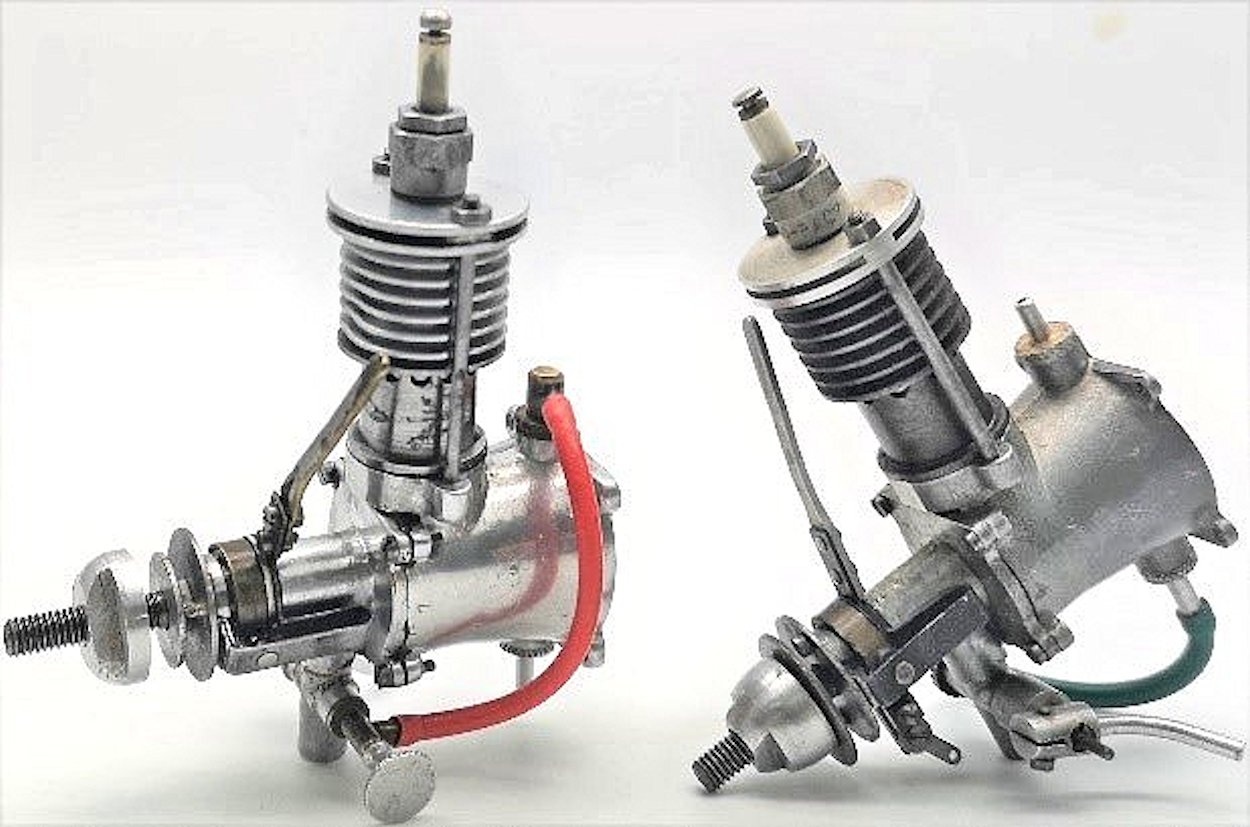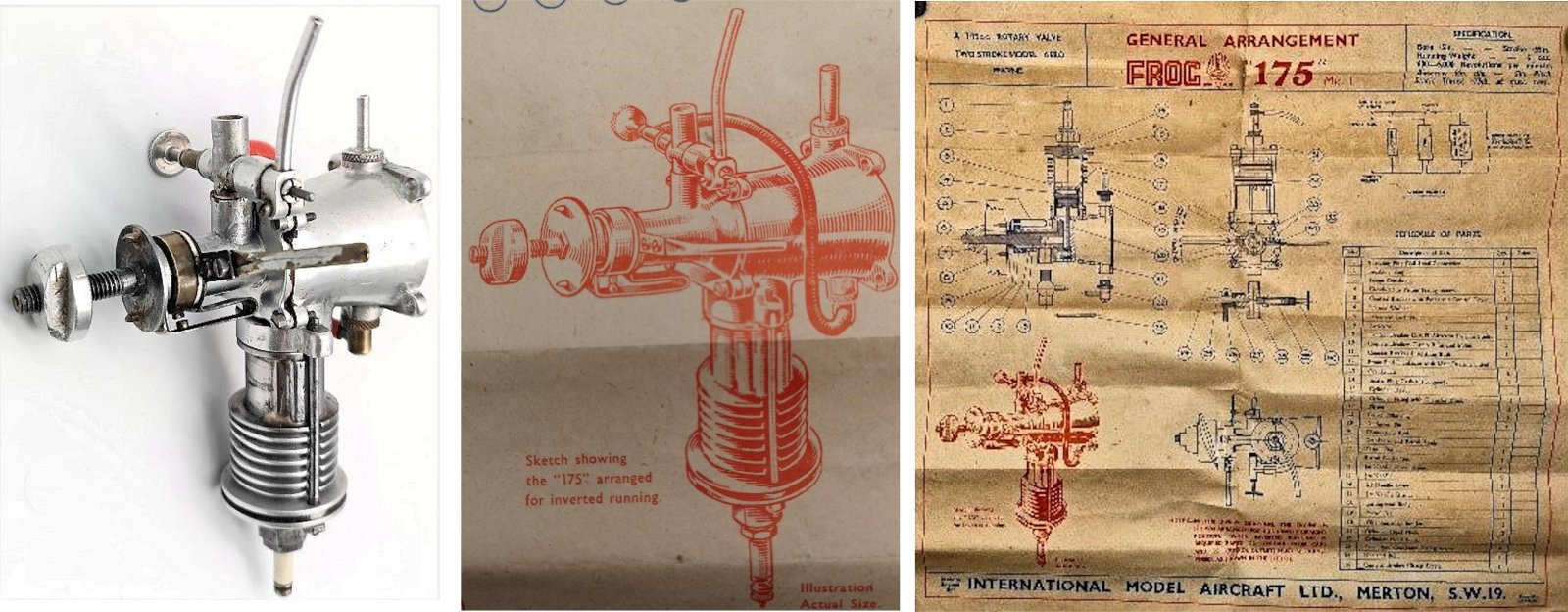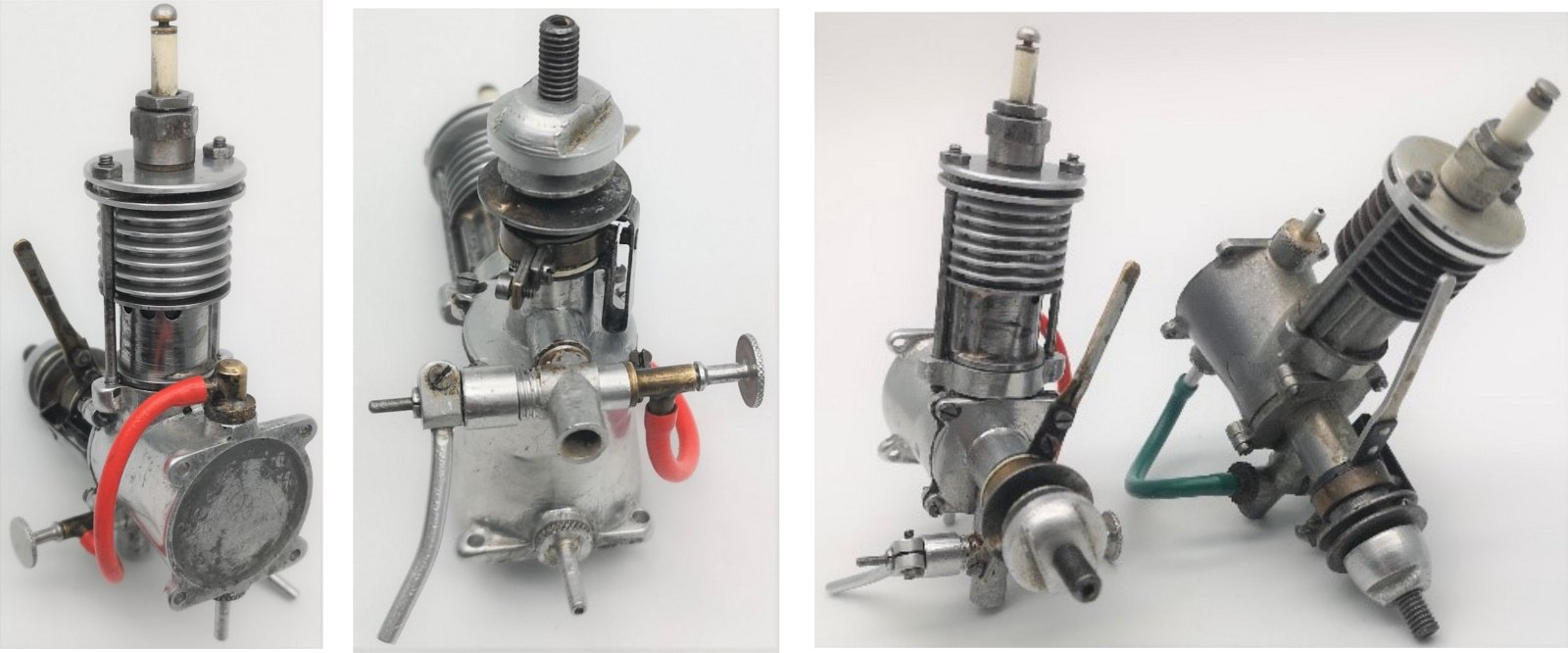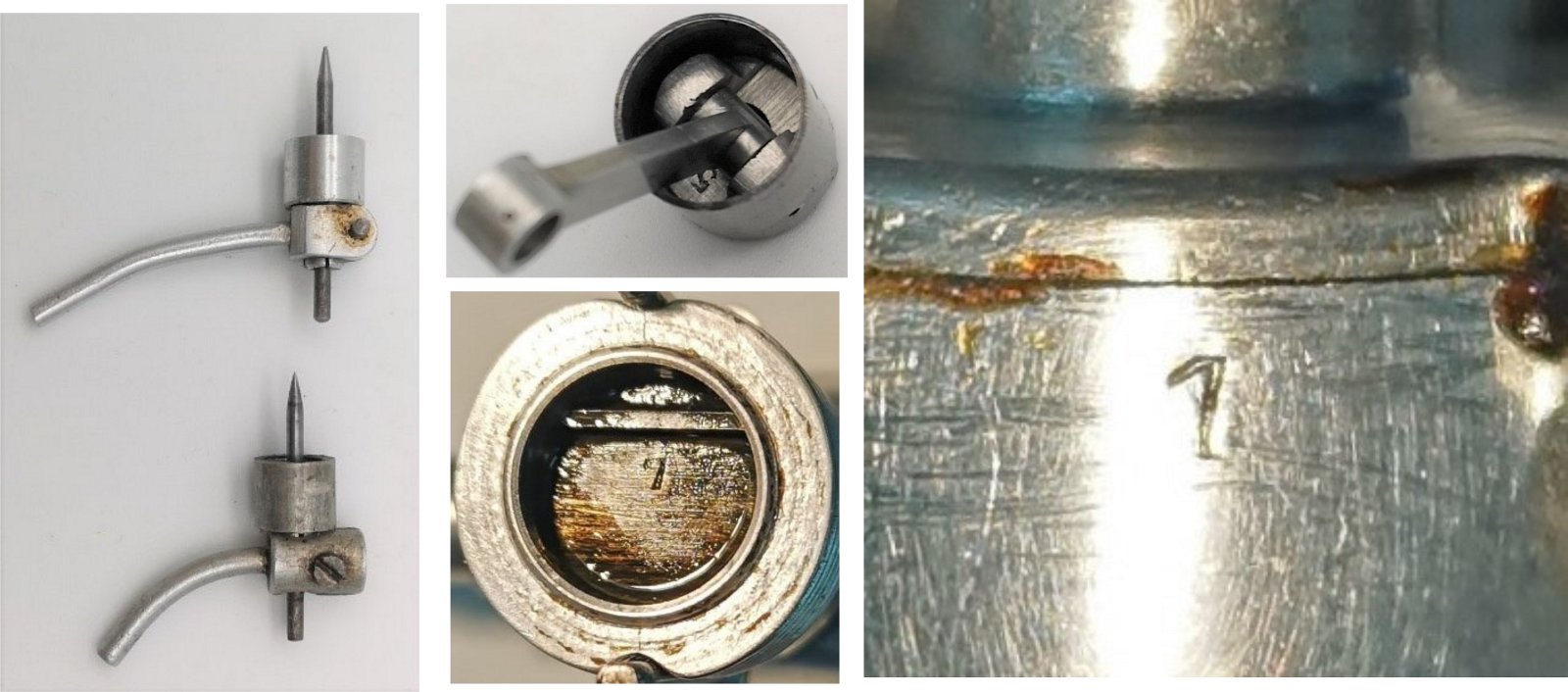
|
|
A Prototype FROG 175 By Miles Patience.
My late father and I believe this to be a 1945 prototype of the FROG 175 made by George Court, whose story is told in Adrian’s main article on the early FROG engines. We purchased the engine from an eBay seller some time ago. There were a lot of bidders for it, so clearly others agreed with this thought. Regrettably, as is all too frequently the case, the seller had no real history for this particular engine, so that has been lost to time. As many readers will know, the FROG 175 spent around 3 years in production, becoming very popular. It really set up IMA in good standing for the next 15 years of model engine manufacturing up to 1962. Despite its notably lightweight construction, it was a surprisingly spritely performer that started and ran very well, fully justifying its popularity. Its main drawback was its vulnerability to crash damage. Having had time to look over the engine and compare it with a new-in-box production example, it quickly became clear that the prototype was a lot more complex to manufacture. As is only to be expected with transitioning from a prototype to a production-ready design, a lot of subtle manufacturing simplifications were made. The most notable weaknesses of the first production engines were the small “mouse ear” mounting lugs, as they were extremely prone to breaking off. The prototype lugs are a good bit thicker and shaped for strength, although mounting the engine would be just as tricky.
The production version of the 175 was sent out with several items of paperwork. This included an instruction booklet, a parts price list and a detailed drawing of the complete engine. Looking carefully at that illustration, which was also used in their adverts, the engine looks to be the prototype model now under discussion.
As can be seen from the photos, there are lots of subtle differences, the more obvious being as follows:
During the course of my research, I came across a couple of printed price lists. The first, an undated list, offers the early brass fuel parts, including the aluminium “cleaning plug for jet”. The second list, dated February 1st, 1947 offers the second and much more frequently-seen style of the short turned and knurled brass fuel nipple. I hope that early FROG aficionados will find this material to be of interest. __________________________ Article © Miles Patience, England First published November 2021
|
| |
 Since with the help of others, Adrian has put a lot of time into creating the very detailed pages on this website about FROG engines, it may be of interest to see a surviving prototype of where it all began with the first production engine from International Model Aircraft (IMA), the spark ignition FROG 175.
Since with the help of others, Adrian has put a lot of time into creating the very detailed pages on this website about FROG engines, it may be of interest to see a surviving prototype of where it all began with the first production engine from International Model Aircraft (IMA), the spark ignition FROG 175. 


